Steel heating radiators: types, characteristics and advantages of batteries
One of the priority components of the comfort of a room is a comfortable temperature, the achievement and maintenance of which would be impossible without the presence of high-quality batteries. The most popular are steel heating radiators, characterized by good thermal inertia, high reliability and heat transfer.
There are various modifications of such batteries on the market. Before choosing the appropriate option, you need to understand the design and operational features of each type, don’t you agree?
The article details the advantages and disadvantages of various types of steel radiators, describes how to connect heating devices and provides recommendations for their selection.
To make the task easier, we have prepared a review of domestic and foreign manufacturers whose products have proven themselves to be positive and are in stable demand among buyers.
The content of the article:
What materials are batteries made from?
Radiators not only help create a pleasant temperature in the room, but can also become a real decoration of the room. They differ radically from each other in the material of manufacture.
The following options are in great demand on the heating equipment market:
- aluminum;
- bimetallic;
- cast iron;
- copper;
- steel.
Aluminum appliances characterized by light weight and modern appearance. A characteristic feature is the efficiency of energy resources spent on heating and the ease of installation work. Thanks to the thin walls of the batteries, quick heating and a high level of heat transfer are achieved.
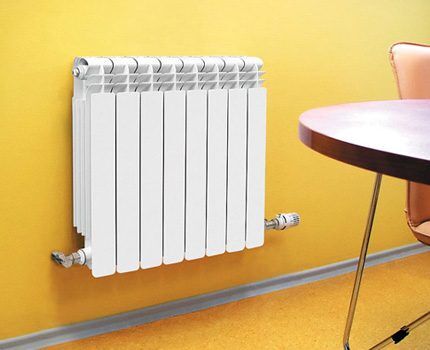
Bimetallic radiators- these are models for the manufacture of which steel and aluminum are used. A successful combination of metals ensures rapid heating and increases the ability to withstand pressure loads. This type of radiator is suitable for both autonomous and central heating systems.
Cast iron equipment characterized by a high degree of heat transfer, reliability and durability. These are unassuming contours, like those of the old MC-140 models, well known from Soviet times. They also produce more respectable models with modernized and modified surfaces, smoothed inside and out.
Copper batteries durable, but have a fairly high price. Therefore they are used quite rarely.
Steel heat exchangers characterized by simplicity of design, which helps to ensure convection heating of the room.
To get to know steel radiators in more detail, you need to understand their classification by type, familiarize yourself with the technical characteristics, features of installation work and operation.
Main types of steel radiators
Steel is ideal for the manufacture of radiators due to its flexibility, strength, ductility, and wear resistance. These devices may differ in their shape and design. Based on the principle of their design, they can be divided into tubular and panel.
As for tubular steel radiators, they consist of rectangular or round pipes, and panel ones - of 1-2-3 panels. To make a decision on choosing the optimal type of heating device, you need to fully understand the technical and design features of each of them.
Panel heating devices
Panel devices successfully combine the functions of a convector and a radiator and are distinguished by their primitive, simple and effective design.
Features of panel radiators
Panel-type steel batteries are presented in the form of two plates connected by welding. Thanks to the connection, a sealed space is created for coolant circulation. The use of spot welding ensures high reliability of the weld.
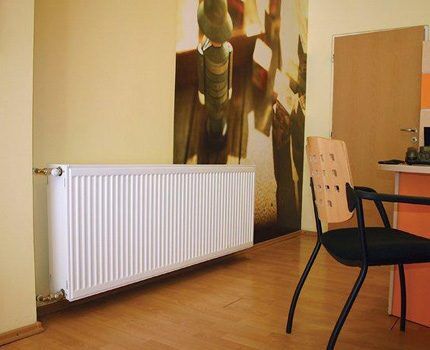
When in contact with almost anyone type of coolant steel is subject to corrosion, its physical wear can reach 0.1 mm per year.
The reduction of this negative indicator is ensured by the high quality of painting performed in the following ways:
- cathodic electrophoresis – when paint is applied to the surface of the device and, under the influence of a current source with a negative value, penetrates deeply into the pores of the material;
- anodic electrophoresis – this type of staining proceeds similarly to the cathodic one, only the surface has a positive charge;
- dive – steel appliances are simply immersed in the coloring mixture.
The most progressive method is considered to be cathodic electrophoresis, which has successfully proven itself in many industries, including painting car bodies.
All panel radiators can be classified into types depending on the number of convector heat exchangers and the number of panels.

Panel batteries are guaranteed to have a long service life at coolant temperatures up to 70°C. It is important that the maximum temperature of the liquid circulating in the system does not exceed 100°C
When installing panel steel radiators, take into account that their operating pressure should not exceed 10 bar. This indicator is quite sufficient when the house or apartment has centralized heating - system pressure is 9 bar.

However, it must be taken into account that when checking the line before starting, short-term water hammer in the system — increase the pressure to 15 bar. The test pressure of panel radiators is 13 bar, so they may not withstand water hammer that exceed this value.
If a decision is made to install panel heating equipment in rooms heated centrally, then it is necessary to provide for the installation of special gearboxes that will prevent a critical load on the radiator.
Heating power
The power of the battery is determined by its design, the size of the panels, and their number. Thus, in the absence of convectors in models of types 10 and 20, heat radiation is provided by the panel itself.
But the presence of a convector allows you to create a thermal curtain, while cutting off the cold air that comes from the window. The size of the device plays an important role in the generation of power.
The length of steel heating radiators is in the range of 0.4-3.0 m, and the height ranges from 0.3 m to 0.9 m. The most popular devices are types 21, 22 and 11.
They, with a maximum size of 3 m, have the following characteristics:
- VKO 11 has one panel with a 3.15 kW convector;
- VKO 21 consists of two panels with a 4.2 kW convector;
- VKO 22 - two panels with two convectors of 6.25 kW.
Another parameter that should not be neglected when choosing a steel radiator is its depth. It is determined by the number of sections used in the device.
Detailed information on calculating battery power and determining their quantity is provided in this article.
Battery connection methods
There are panel radiators on the market that allow for bottom and side connections to the pipe system. When choosing a device, you must take into account connection diagram, since in different conditions and places of connection to the circuit, radiators of both types of connection may be required.
The bottom connection allows you to hide the circuit pipes in the walls or floor. It must be taken into account that with a bottom connection, the aesthetic side of the interior is maximized, while the efficiency of the radiator is reduced by 15-20% due to losses.

Installation work on lateral connections is much simpler, and heat transfer is higher. The side connection of the panel radiator ensures connection both to vertical risers and to the contour running along the floor.
Pros and cons of panel radiators
Panel-type batteries, like any equipment, have their strengths and weaknesses. Their main advantage over their counterparts made from other materials is cost and appearance. These advantages are especially noticeable when compared with copper or cast iron models.
The advantages of panel structures are as follows:
- Reliability and simplicity of the device. The absence of complex elements minimizes the likelihood of breakdown.
- Ease of installation. It is possible to carry out installation work on your own. Both bottom connection to the circuit and side connection are also available.
- Good heat dissipation, which is achieved not only by the large battery area, but also by convection.
- Economical. Panel models of devices require a minimum amount of coolant, which requires less energy to heat up. Savings, in comparison with equipment made of cast iron, can reach 30-40%.
- Presentable appearance – this allows you not to spend additional money on the purchase and installation of decorative and protective screens.
- A wide range of – a rich model range with various dimensions in length, depth, height of devices.
It is obvious that panel instruments have quite a lot of advantages, which explains their popularity and demand. But they also have significant disadvantages. If this is neglected, the stable and reliable operation of the entire heating system can be jeopardized.
The weaknesses of panel-type equipment are as follows:
- Sensitivity of welds to water hammer. With centralized heating, safe operation is only possible if a gearbox is installed, the purpose of which is to mitigate water hammer.
- Prone to corrosion, which manifests itself especially acutely when the quality of the circulating fluid is low. The cyclical six-month absence of water inherent in central heating systems significantly accelerates corrosion, reducing the service life of the radiator.
- Probability of defects — during transportation and operation, the instrument panels are easily scratched, which can also accelerate corrosion.
When choosing panel-type steel radiators, you need to take into account all the details of their operation, especially when connecting to central heating systems.
Features of tubular batteries
Due to their higher cost, tubular steel batteries are used much less frequently than panel batteries. The design consists of several rows of parallel tubes. In this case, the rows can be located not only horizontally or vertically, but also at an angle.
Characteristics of tubular instruments
Although the operating principle is identical, the methods for manufacturing tubular equipment vary. Some are made in the form of sections, similar to cast iron, which are joined by welding. For others, steel rows of tubes are used, connected at the bottom and top by manifolds.
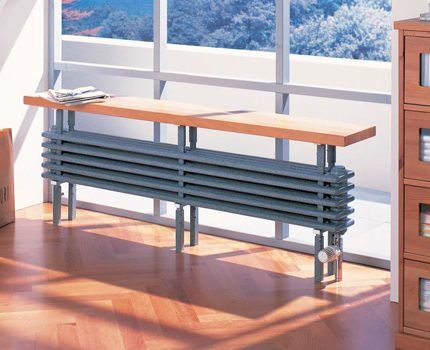
Although the design of tubular radiators varies, almost all models have similar characteristics. This equipment is optimally suited for installation in heating systems in low-rise buildings.
The heat transfer of tubular radiators, compared to panel-type analogues, is greater, but the price is much higher.
Tubular radiators have the following technical characteristics:
- operating pressure 15 atmospheres - during the manufacturing process, 2 tests are carried out - with air for tightness and with water for strength;
- able to withstand significant coolant temperatures - up to 130°C;
- a large selection of dimensions - depth from 40 to 290 mm, height from 190 to 3000 mm, there are no restrictions on length at all;
- for manufacturing they use steel with a thickness of 1.32 to 1.5 mm;
- availability of outlets for side and bottom connections.
The inner walls of tubular devices are most often coated with a polymer composition. This significantly extends their service life. The smooth surface prevents the accumulation of dust, therefore, in terms of hygiene, tubular devices compare favorably with aluminum, cast iron and bimetallic analogues, the cleaning of which causes a lot of inconvenience.
Strengths and weaknesses of batteries
Tubular models of heating devices are appropriate for use in private homes, where the heating system is characterized by a stable and low operating pressure in the absence of sudden surges and water hammer.
The popularity of tubular devices is due to a set of their positive qualities:
- high working pressure and the ability to withstand water hammer;
- resistance to damage mechanical in nature due to the absence of gaskets in welded sections;
- uniform heating of the surface and high heat transfer;
- smooth surface prevents dust accumulation;
- ease of installation, possibility of bottom and side connection, various placement options;
- possibility of temperature adjustment when equipped thermostatic valve.
In addition to fasteners, tubular radiators can be equipped with special brackets used as heated towel rails.
There is also a whole category of models classified as design radiators - they are used to create an interior. These devices can be produced in the form of frames for mirrors or railings for stairs. Floor-to-ceiling height models are successfully used for zoning a room.
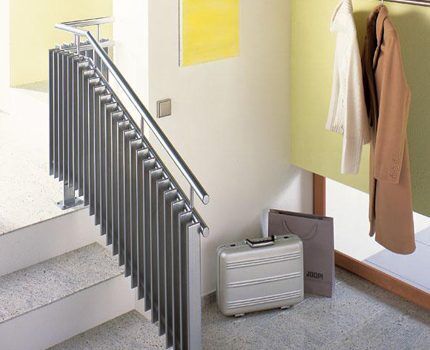
A lot of positive qualities and excellent characteristics inherent in steel heating radiators make their use attractive. Such devices are easy to fit into the interior; they allow you to visually expand the space.
However, we should not forget about the disadvantages of tubular models, which are as follows:
- low resistance to corrosion processes, especially evident when the quality of the coolant is low; Spot welding areas are most susceptible to corrosion.
- high cost.
As for cost, tubular batteries are by no means a budget solution. Their installation is most often resorted to by designers who are not constrained by funds when implementing their projects.
How to choose the right radiators
One of the important characteristics influencing the choice of heating equipment is power. In addition to this, there are a number of characteristics that significantly influence the choice of steel batteries that should be used as a guide when purchasing them.
The size of the device must correspond to the area of the heated room. Without taking into account individual nuances, we can assume that for heating 1 m2 area requires 0.1 kW of thermal energy.
The heat transfer of steel appliances used in the heating system directly depends on their area. Thus, the length of the radiator installed under the window should be about 60-70% of the width of the window opening.
When choosing the most suitable model, it would be useful to take into account the following subtleties:
- Devices with a manual or mechanical thermostat are considered the most practical;
- avoiding accidents or minimizing the risk of flooding will allow installing a ball valve that shuts off the flow of coolant;
- To ensure the efficiency of the heating system, it is necessary to periodically remove the air that accumulates inside - suitable for these purposes Mayevsky crane.
Another selection criterion is the manufacturer’s reputation and additional services offered when purchasing a product. Thus, preference should be given to those companies that provide installation, operational and maintenance services for sold steel devices.
Manufacturers of steel appliances
On the heating equipment market, steel radiators are represented by models from many manufacturers, but the manufacturing technology practically does not differ, and the cost may differ slightly.
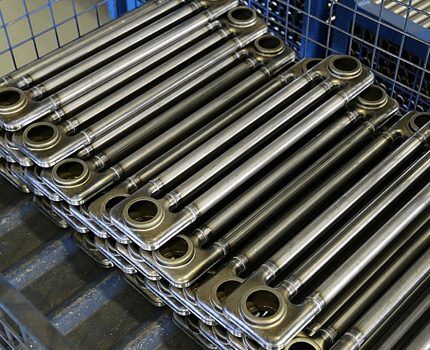
The price of a product is determined by its size, brand, design. It is often possible to purchase a high-quality domestic device that is not inferior in its characteristics to a world-famous brand.
Among the domestic companies whose products are in stable demand in our market are the following:
- Lidea;
- Prado;
- Conrad.
Company devices Lidea are produced in Belarus.They are equipped with 1-2-3 panels, the volume of coolant in which is in the range of 0.9-6.55 liters and depends on the size. Radiator power with one panel is 2.1 kW, with two panels – 3.9 kW, with three panels – 5.6 kW. Steel thickness 1.2 mm, operating pressure 8.9 bar.
heating equipment Prado produced in Izhevsk. It is equipped with 1-2 panels, the volume of coolant varies between 0.8-5.7 liters. As for power, a radiator with one panel has 1.4 kW, with two panels it has 2.3 kW. Steel thickness 1.4 mm, operating pressure 8.8 bar.
Batteries Conrad are produced in St. Petersburg. They are equipped with 1-2 panels, the volume of coolant in which is 0.85-5.2 liters and depends on the size. The power of the device with one panel is 1.35 kW, with two panels – 2.3 kW. Steel thickness 1.4 mm, working pressure 10 bar.
Among European manufacturers of tubular steel batteries, German and Italian companies have proven themselves well: Charleston, Kermi, Arbonia, Israp Tesi.
Panel heating batteries made in Germany are also the most popular. Kermi And Buderus, a Finnish company PURMO. Radiators are almost in no way inferior to them in quality and popularity. Delonghi from Italy, as well as devices Korado of Czech origin.
Models of panel and tubular radiators made in Europe have different dimensions and power. Technical characteristics are presented in the passport of each model.
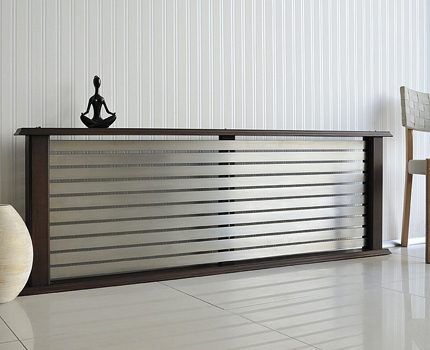
Steel radiators are among the most popular heating devices.Due to their presentable appearance, affordable price and high heat output, they are widely used in offices, houses and apartments. The maximum service life of steel radiators is achieved in autonomous heating systems.
Conclusions and useful video on the topic
Installation features and possible connection diagrams for steel heating equipment in the video:
The video demonstrates strength testing of heating devices from well-known manufacturers:
After familiarizing yourself with the characteristics and features of steel radiators, you can choose the best option for yourself. Moreover, the heating equipment market is replete with models from domestic and foreign manufacturers. The main thing is not to overpay for a branded product in pursuit of the ideal shape.
Are you looking for steel heating radiators? Or do you have experience using such batteries? Please leave comments on the article, ask questions and share your impressions about using steel radiators. The communication block is located below.
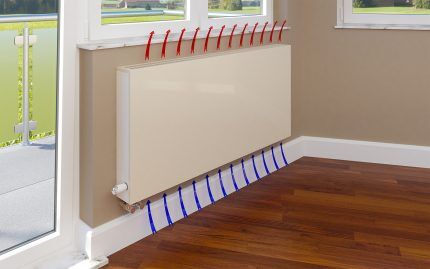




Maybe I’m a retrograde in this regard, but for me the best radiators are cast iron. In any case, it was possible to compare the work of cast iron, aluminum and steel radiators. And in this comparison, it was cast iron that won on all fronts. They have much better heat transfer, they have long been time-tested, although they are not so popular now. In addition, one of the most inexpensive.